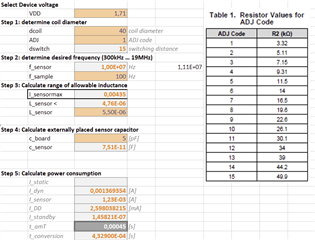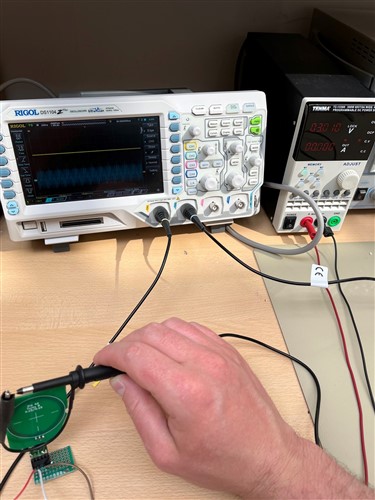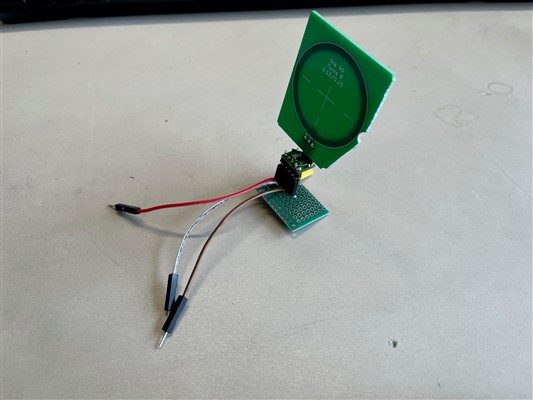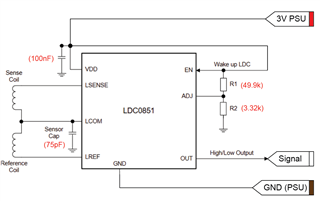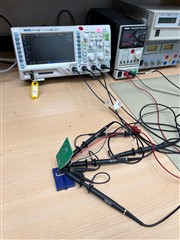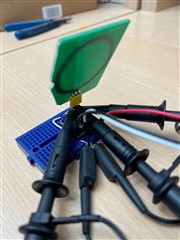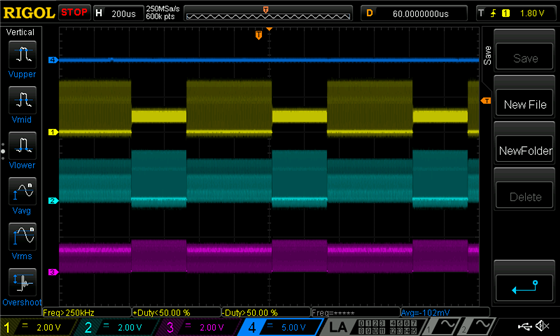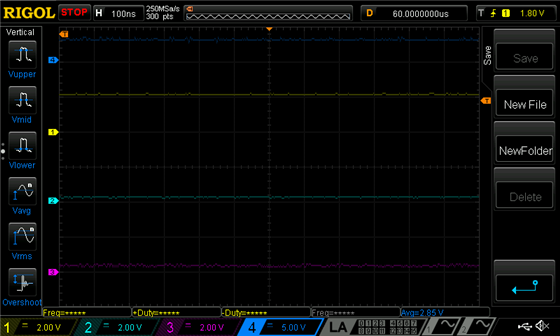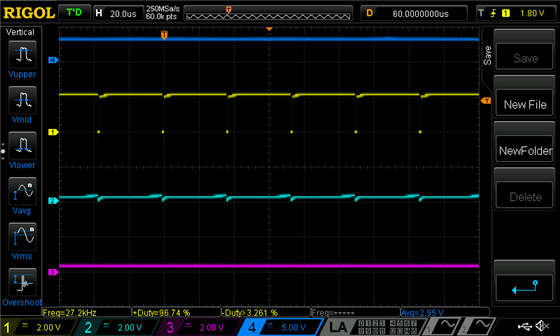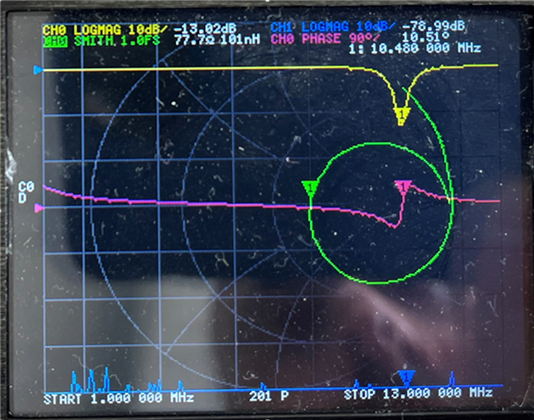Dear TI,
I'm working with the LDC0851 and have specced several coils that I would like to try out to experiment with sensing distance. I have a 60mm, 40mm and 30mm diameter coils, each of 8 turns - 0.15mm/0.15mm track width/spacing. According to the coil designer these should have inductances of 9.447 µH, 5.523 µH and 3.711 µH respectively. In this calculation I left LC sensor capacitance as 1000pF as I am unsure how to determine this. I had these coils manufactured on a 4-layer board, with 1oz layers (including inner layers).
I have started with the 40mm coil, and have this assembled on a perfboard assembly according to the low power operation circuit in Fig. 30. Here, R2 was picked according to ADJ code 1 and Csensor determined by Eq 8 to be 75pF (Cboard estimated to be 5pF). I am powering this with a PSU set to 3V, and monitoring the output pin on an oscilloscope. It should be noted that all caps (power decoupling and Csensor) were assembled directly on the breakout board, close to the IC.
However, when approaching the sensor with several metal objects of various sizes (another coil, a box cutter, probe test leads, a spare PSU) I am not getting any signal from the output pin: i.e. it remains high.
When I make a loop on my oscilloscope lead and bring that close (almost touching) to the coil I do see a waveform of approx 30MHz, 200mV peak-to-peak and when I interrupt the EN pin the IC draws nearly no power and stops the waveform, so all in all I'm confident that the IC is working. Have I made any errors in my passive component selection or is my setup otherwise not appropriate? Looking forward to any feedback on this.
